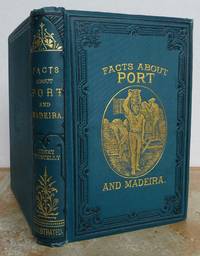
Dialogo nel quale si ragiona del modo di accrescere, et conservare la memoria.
by Dolce, Lodovico (1508-1568); Johann Host von Romberch
- Used
- very good
- Hardcover
- first
- Condition
- Very Good
- Seller
-
Tuxedo Park, New York, United States
Item Price
SGD 4,136.10
Or just SGD 4,108.53 with a
Bibliophiles Club Membership
Bibliophiles Club Membership
Ask Seller a Question
Payment Methods Accepted
About This Item
Venice: Giovanni Battista e Marchio Sessa, 1562. First edition. Very Good. Octavo (14 cm); [4], 119, [1] leaves, signed A-P\8. Printer's Pegasus device framed by breasty lions, grotesques, fruits, etc. on title page. Woodcut initials, and 23 woodcuts throughout text of mnemonic diagrams and charts, musical notation, and illustrations, which include a head labelled to show the areas responsible for different mental and sensory faculties (one of the earliest examples of phrenological illustration); and the buildings of a town labelled to indicate the businesses located within, such as "barbitonsor" (barbershop), "bovicida" (slaughterhouse), "abatia" (abbey), and "bibliopola" (bookstore displaying books in shop window). Bound in early full stiff vellum, label with title on spine.
References: Adams D-732; Mortimer, Italian, 157; Brunet II, 789; BM Italian p.220.
The mechanics of memory was an abiding concern of the polymath humanist Lodovico Dolce (d. 1568). He first approached it systematically in 1547 with a "Dialogue on women's education," and then with greater focus in 1556 with the text offered here. Dolce explores the concept of the "memory palace," where one associates specific items or specific texts with an imaginary chamber in an imaginary building: a exercise still taught today. He provides other techniques for using vivid mental images and repetition in order to memorize complex texts. With 16 wood-engraved plates and 7 pages of an alphabet populated with mnemonic figures. It is traditional to mention here that the text is based on research by Johann Host von Romberch published in 1520 as Congestorium artificiose memorie. Indeed the plates were designed for an earlier edition of Congestorium. Mortimer speculates that Dolce's interest in elaborating this text may have come from his inspection of the blocks, and I desire to gloss them.
References: Adams D-732; Mortimer, Italian, 157; Brunet II, 789; BM Italian p.220.
The mechanics of memory was an abiding concern of the polymath humanist Lodovico Dolce (d. 1568). He first approached it systematically in 1547 with a "Dialogue on women's education," and then with greater focus in 1556 with the text offered here. Dolce explores the concept of the "memory palace," where one associates specific items or specific texts with an imaginary chamber in an imaginary building: a exercise still taught today. He provides other techniques for using vivid mental images and repetition in order to memorize complex texts. With 16 wood-engraved plates and 7 pages of an alphabet populated with mnemonic figures. It is traditional to mention here that the text is based on research by Johann Host von Romberch published in 1520 as Congestorium artificiose memorie. Indeed the plates were designed for an earlier edition of Congestorium. Mortimer speculates that Dolce's interest in elaborating this text may have come from his inspection of the blocks, and I desire to gloss them.
Reviews
(Log in or Create an Account first!)
Details
- Bookseller
- Rodger Friedman Rare Book Studio
(US)
- Bookseller's Inventory #
- 6748
- Title
- Dialogo nel quale si ragiona del modo di accrescere, et conservare la memoria.
- Author
- Dolce, Lodovico (1508-1568); Johann Host von Romberch
- Book Condition
- Used - Very Good
- Quantity Available
- 1
- Edition
- First edition
- Binding
- Hardcover
- Publisher
- Giovanni Battista e Marchio Sessa
- Place of Publication
- Venice
- Date Published
- 1562
- Weight
- 0.00 lbs
- Keywords
- Bookseller catalogs
- Renaissance and Early Modern Humanism;
Terms of Sale
Rodger Friedman Rare Book Studio
All items guaranteed authentic and as described. Any purchase is returnable for any reason within 10 days of receipt. New York State residents are obliged to add sales tax. Shipping charges will be assessed and billed at full value.
About the Seller
Rodger Friedman Rare Book Studio
Biblio member since 2006
Tuxedo Park, New York
Ask Seller a Question
About Rodger Friedman Rare Book Studio
Rodger Friedman Rare Book Studio owes its name and its inspiration to the traditional Italian studio bibliografico. These small antiquarian bookshops, typically run by individuals who combine deep scholarship with a love of the printed object, remind us that underlying the words "study" and "studio" is the Latin term for zeal and devotion, studium. Since 1993, my goal has been to match discerning collectors with extraordinary books and manuscripts.
Glossary
Some terminology that may be used in this description includes:
- First Edition
- In book collecting, the first edition is the earliest published form of a book. A book may have more than one first edition in...
- Vellum
- Vellum is a sheet of specialty prepared skin of lamb, calf, or goat kid used for binding a book or for printing and writing. ...
- Title Page
- A page at the front of a book which may contain the title of the book, any subtitles, the authors, contributors, editors, the...
- Leaves
- Very generally, "leaves" refers to the pages of a book, as in the common phrase, "loose-leaf pages." A leaf is a single sheet...
- Octavo
- Another of the terms referring to page or book size, octavo refers to a standard printer's sheet folded four times, producing...
- Spine
- The outer portion of a book which covers the actual binding. The spine usually faces outward when a book is placed on a shelf....
- Device
- Especially for older books, a printer's device refers to an identifying mark, also sometimes called a printer's mark, on the...




